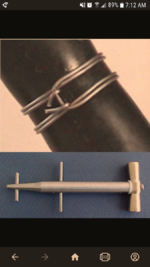Goodbrake
Mame
I plan to ground layer a Japanese maple this spring just above it's existing root structure using the tourniquet method. Would it be beneficial to apply a liquid rooting hormone to the tourniquet area? I've read rooting hormones can impede rooting when applied to root tissue, and I am not sure if the area I plan to layer is high enough above the roots to ensure that the area doesn't contain root cells.

